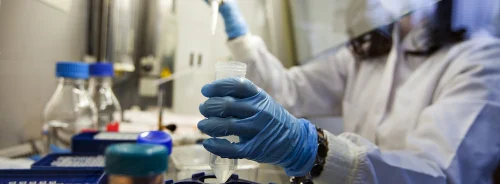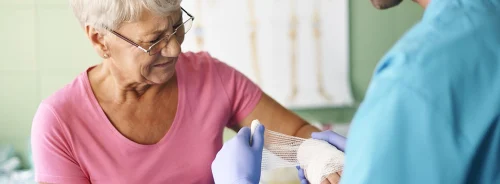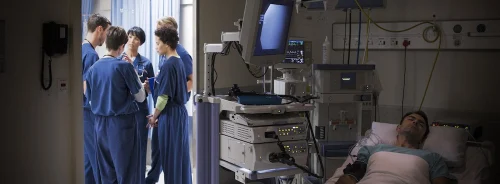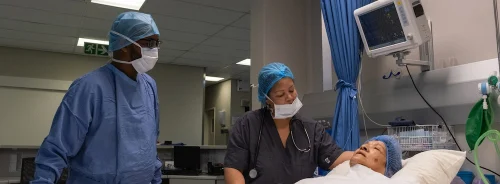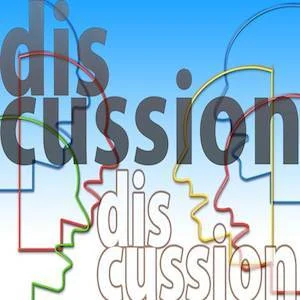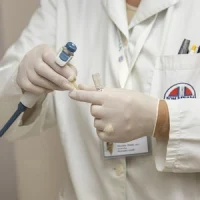End-of-life decision making in the ICU can impact not only the families of patients, but also doctors, nurses and hospital rapid response teams.
The reviewers found that mostly doctors were accountable for end-of-life decision-making, although there were differences in the process and in collaboration between doctors and nurses, depending on nurse seniority, experience or the doctors’ preferences. Common themes in the papers studied were that nurses were inconsistently included in end-of-life discussions, were most likely to recognise when patient treatment becomes futile and to informally alert doctors when end-of-life decisions are needed.
The greatest challenges were role ambiguity, communication, indecision on treatment futility and starting end-of-life discussions. Stress from decision-making led in some studies to decreased job satisfaction and emotional and psychological burnout. More experienced doctors were more likely to include nurses in end-of-life discussions. Moral distress was found when nurses were excluded from end-of-life discussions. Inexperienced and inadequately prepared nurses and doctors lead to difficult end-of-life decision making and contribute to burnout, note the reviewers.
See Also: "Like Firemen Going into a Fire": Moral Distress in the Intensive Care Unit
They conclude that a collaborative decision making framework developed by all relevant stakeholders may ensure a more standardised approach to end-of-life decisions that includes nurses as the primary caregiver. Education to use the framework is essential for doctors and nurses, they write. This may potentially prevent burnout experienced due to ambiguous roles.
There are both advantages and disadvantages to involving RRTs in palliative care, said De Robertis. The advantages are that they can improve the administration of palliative care and reduce suffering, and bring their education and experience to the wards, as access to palliative care can be difficult for in-hospital patients. The disadvantage may be that they may prolong the dying process if invasive therapies are offered, and create a negative attitude towards the RRT system. As an outside influence they can help to focus on the situation and break down barriers, as the attending doctors may not recognise or accept that the patient is dying and may not have the time or comfort to start the end-of-life discussions with the patient or the family.
Doctors need to better characterise which patients benefit from aggressive treatment, to improve advance care planning and palliation and better understand how to best use RRTs in these situations, he concluded.
ICU leaders need to see the signs of stress, said Azoulay.
Stress versus Burnout
TOO MUCH
Too many pressures that demand too much of you physically and psychologically
But
you believe that if you can get everything under control, you’ll feel better
NOT ENOUGH
You feel empty, devoid of motivation and beyond caring
10 Signs You May Be experiencing Burnout
Intensivists need to emphasise that they are here for the patient, and use tools to empower patients and their families and to elicit the patients’ preferences and values.
Nurse participation in rounds is not only a normal way to behave, said Azoulay, but it decreases ICU conflicts, perception of inappropriate care, iatrogenic events and improves nurses’ satisfaction and reduces nurses’ PTSD and moral distress.
Azoulay recommended that nurses and doctors talk together to the relatives, and to more than one family member if possible. It should be daily, can be short or long, for important or daily news. It helps to avoid contradictions, improve family satisfaction and reduce the post-ICU burden for the relatives, he added.
Image credit: Pixabay
Effect on Doctors and Nurses
A literature review published in Australian Critical Care by Liz Flannery and colleagues from the School of Nursing and Midwifery at the University of Western Sydney, Australia, focused on who is involved in end-of-life decisions, what challenges doctors and nurses face, and whether such decisions are a source of moral distress.The reviewers found that mostly doctors were accountable for end-of-life decision-making, although there were differences in the process and in collaboration between doctors and nurses, depending on nurse seniority, experience or the doctors’ preferences. Common themes in the papers studied were that nurses were inconsistently included in end-of-life discussions, were most likely to recognise when patient treatment becomes futile and to informally alert doctors when end-of-life decisions are needed.
The greatest challenges were role ambiguity, communication, indecision on treatment futility and starting end-of-life discussions. Stress from decision-making led in some studies to decreased job satisfaction and emotional and psychological burnout. More experienced doctors were more likely to include nurses in end-of-life discussions. Moral distress was found when nurses were excluded from end-of-life discussions. Inexperienced and inadequately prepared nurses and doctors lead to difficult end-of-life decision making and contribute to burnout, note the reviewers.
See Also: "Like Firemen Going into a Fire": Moral Distress in the Intensive Care Unit
They conclude that a collaborative decision making framework developed by all relevant stakeholders may ensure a more standardised approach to end-of-life decisions that includes nurses as the primary caregiver. Education to use the framework is essential for doctors and nurses, they write. This may potentially prevent burnout experienced due to ambiguous roles.
Rapid Response Teams Can Play a Role in End-of-Life Care
Rapid response teams were developed to prevent unexpected deaths, but are also used today to review patients at the end of life who do not have reversible deteriation, said Edoardo de Robertis, Professor in Anaesthesiology at the University Federico II of Napoli, Italy, Chair of the Unit of Gynaecological and Obstetric Anaesthesia at the University Hospital Federico II, Naples and Chair of the European Society of Anaesthesiology Guidelines Committee, speaking at Euroanaesthesia 2016 in London in May. He pointed out that Rapid Response Teams (RRTs) or Medical Emergency Teams (METs) are now often called to patients who are dying, especially as most people die in hospital. As only around 10 percent of deaths in hospital are sudden, other patients could benefit from in hospital palliative care, said De Robertis.There are both advantages and disadvantages to involving RRTs in palliative care, said De Robertis. The advantages are that they can improve the administration of palliative care and reduce suffering, and bring their education and experience to the wards, as access to palliative care can be difficult for in-hospital patients. The disadvantage may be that they may prolong the dying process if invasive therapies are offered, and create a negative attitude towards the RRT system. As an outside influence they can help to focus on the situation and break down barriers, as the attending doctors may not recognise or accept that the patient is dying and may not have the time or comfort to start the end-of-life discussions with the patient or the family.
Doctors need to better characterise which patients benefit from aggressive treatment, to improve advance care planning and palliation and better understand how to best use RRTs in these situations, he concluded.
Burnout and Stress
Elie Azoulay, Chair of the European Society of Intensive Care Medicine Ethics section, speaking at Euroanaesthesia 2016 in London in May, had advice for recognising and dealing with stress and burnout, particularly as it related to nurse perceptions that patients were receiving inappropriate care.ICU leaders need to see the signs of stress, said Azoulay.
| Stress | Burnout |
| Characterised by overengagement | Characterised by disengagement |
| Emotions are overreactive | Emotions are blunted |
| Produces urgency and hyperactivity | Produces helplessness and hopelessness |
| Loss of energy | Loss of motivation, ideals and hope |
| Leads to anxiety disorders | Leads to detachment and depression |
| Primary damage is physical | Primary damage is emotional |
| May kill you prematurely | May make life seem not worth living |
Stress versus Burnout
TOO MUCH
Too many pressures that demand too much of you physically and psychologically
But
you believe that if you can get everything under control, you’ll feel better
NOT ENOUGH
You feel empty, devoid of motivation and beyond caring
10 Signs You May Be experiencing Burnout
- Exhaustion (you always feel tired, completely spent)
- Lack of motivation (hard to get going in the morning)
- Frustration, cynicism, sense of failure and self-doubt
- Cognitive problems (to pay attention or concentrate)
- Slipping job performance, detachment
- Interpersonal problems (conflicts or stop talking)
- Not taking care of yourself (weight, alcohol, sleeping pills..and even vulnerability to colds and flu)
- Being preoccupied with work outside working hours
- Generally decreased satisfaction (unhappy, detached)
- Health problems: digestive, heart, depression, obesity
Intensivists need to emphasise that they are here for the patient, and use tools to empower patients and their families and to elicit the patients’ preferences and values.
Nurse participation in rounds is not only a normal way to behave, said Azoulay, but it decreases ICU conflicts, perception of inappropriate care, iatrogenic events and improves nurses’ satisfaction and reduces nurses’ PTSD and moral distress.
Azoulay recommended that nurses and doctors talk together to the relatives, and to more than one family member if possible. It should be daily, can be short or long, for important or daily news. It helps to avoid contradictions, improve family satisfaction and reduce the post-ICU burden for the relatives, he added.
Image credit: Pixabay
References:
Flannery L, Ramjan LM, Peters K (2016) End-of-life decisions in the Intensive Care Unit (ICU) - Exploring the experiences of ICU nurses and doctors - A critical literature review. Aust Crit Care, 29(2):97-103. doi: 10.1016/j.aucc.2015.07.004.
Latest Articles
End-of-life, nurses, doctors, burnout, stress, rapid response teams
End-of-life decision making in the ICU can impact not only the families of patients, but also doctors, nurses and hospital rapid response teams. A recent literature review and presentations at Euroanaesthesia 2016 shed more light on the issues.

